Silver is the most sought after jewellery material with two different compositions, Sterling silver and Pure Silver, each having a unique set of features and applications.
Jewellery shopping is not just for fashion, it is often viewed as the most significant investment decision that needs careful planning and consideration in relation to the value you’re going to get in return for your money.
In an age where the markets are filled with all sorts of jewellery items waiting to attract your attention, it often gets confusing to decide what to buy and which deals would be the best for you.
This article aims to help you understand the difference between sterling silver and pure silver, the two popular silver jewellery materials in the market.
Sterling silver and pure silver are both popular materials used in the production of jewellery, but there are some key differences between the two.
Understanding these differences can be helpful when shopping for silver jewellery, as it can help you to make an informed decision about the type of silver that is best suited to your needs and preferences.
What is Sterling Silver?
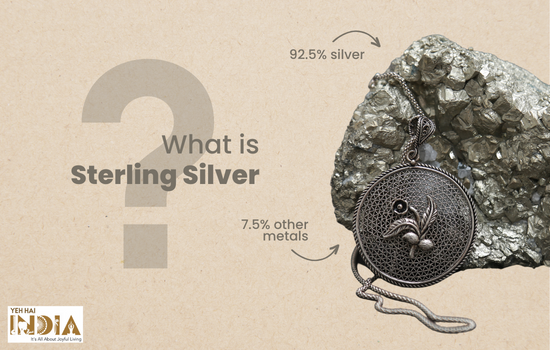
Sterling silver is a type of silver that is composed of 92.5% silver and 7.5% other metals, usually copper.
Sterling silver is a popular choice for jewellery because it is strong, durable, and relatively affordable compared to pure silver.
It is also easier to work with than pure silver, which makes it a popular choice for intricate designs and shapes.
One of the main advantages of sterling silver is that it is less prone to tarnish than pure silver.
This is because the copper content in sterling silver helps to prevent the formation of silver sulfide, which is responsible for tarnishing that takes place with sterling silver.
However, sterling silver can still tarnish over time, especially if it is exposed to heat, moisture, or certain chemicals.
To maintain the lustre of sterling silver jewellery, it is important to clean and polish it regularly, and store it appropriately in a dry and cool place away from corrosive elements.
What is Pure Silver?
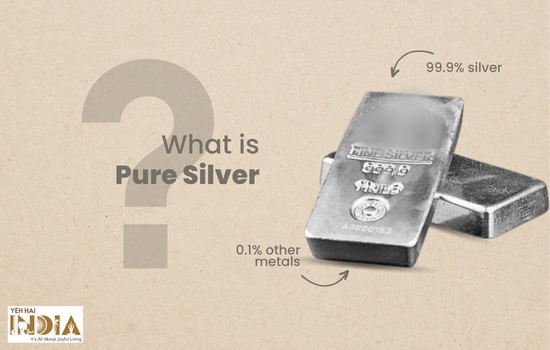
Pure silver, also known as fine silver, is a type of silver that is composed of 99.9% silver and 0.1% other metals.
Pure silver is a soft and malleable metal, which makes it difficult to work with and less suitable for intricate designs and shapes.
It is also more prone to tarnishing than sterling silver, as it lacks the copper content that helps to prevent the formation of silver sulfide.
Despite these challenges, pure silver is highly valued for its purity and beauty. It is often used in the production of high-end jewelry, coins, and other decorative items.
It is also considered to be more valuable than sterling silver, as it is more rare and contains a higher percentage of silver.
Recommended Story – Why Indian Women Wear Silver Toe Rings?
Sterling Silver vs Pure Silver:
There are several key differences between sterling silver and pure silver that are important to consider while buying silver jewellery:
1. Composition
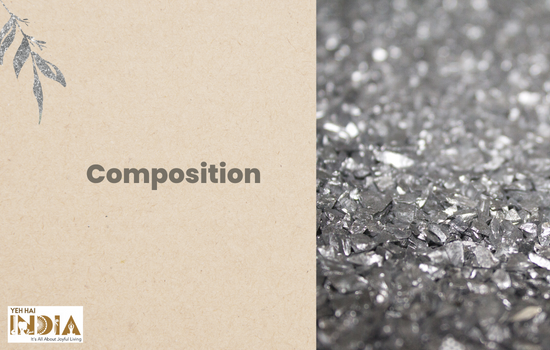
As mentioned above, sterling silver is composed of 92.5% silver and 7.5% other metals, while pure silver is composed of 99.9% silver and 0.1% other metals.
This means that pure silver is purer and more valuable than sterling silver, but also more prone to tarnish.
2. Durability
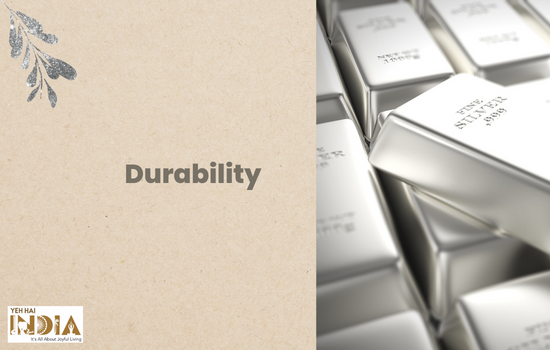
Sterling silver is stronger and more durable than pure silver, due to its higher content of other metals. This makes it less prone to dents, scratches, and other forms of damage.
Pure silver, on the other hand, is softer and more prone to damage, which means it may require more care and maintenance to keep it in good condition.
3. Affordability

Sterling silver is generally more affordable than pure silver, due to its lesser purity and high malleability.
Pure silver, on the other hand, is more expensive, as it is rarer and contains a higher percentage of silver.
4. Tarnishing resistance
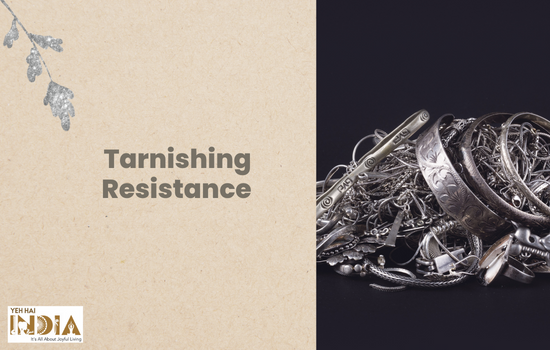
Sterling silver is less prone to tarnishing than pure silver, due to its copper content, which helps to prevent the formation of silver sulfide.
However, both types of silver can tarnish over time, especially if they are exposed to heat, moisture, or certain chemicals.
5. Adaptability to differing patterns and designs

Sterling silver is more suitable for intricate designs and shapes, due to its strength and durability.
Pure silver is softer and less suitable for intricate designs, as it is more prone to damage and deformation.
In conclusion, choosing between sterling silver and pure silver jewelry ultimately comes down to personal preferences and budget.
Sterling silver is a popular and affordable choice due to its bright, shiny appearance and relative durability.
However, it is not as pure as pure silver and may require more maintenance to keep it looking its best.
Pure silver, on the other hand, is a higher quality material but is also more prone to scratching and denting and may require more care and maintenance.
If you are willing to pay a bit more for a higher quality piece, pure silver may be the better choice. Ultimately, the decision will depend on your individual needs and preferences.
It is always a good idea to consider the pros and cons of each option before making a decision, and to choose the material that best fits your personal style and budget expectations.
Whether to buy sterling silver or pure silver jewellery, it all depends on your personal requirements and style concerns which will ultimately lead you to make a purchase you won’t regret later on.
Also Read – Why Is Silver Jewellery Considered A Great Investment?










